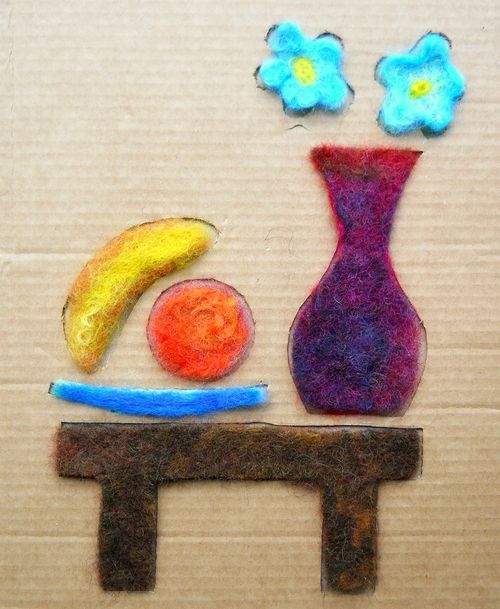Today, the Ladies' Group at my ADS volunteering site began an ambitious project: making necklaces from wool, fabric, and paper. (See photos below for the finished product.)
Ingredients:
1) Felted beads
2) Paper beads
3) Fabric tube to hold it all together (cut fabric 2" x 18", fold right sides together, stitch, and turn the resulting tube right-side out)
4) Fastener fashioned from glass beads
The felted beads go inside the fabric tube -- they will form a springy "pillow bead" when covered in fabric.
The paper beads begin as triangles cut from book covers or other heavy, decorative paper. These are rolled around a drinking straw, glued down, and varnished.
Once all the ingredients are made, assemble the necklaces as follows: Stuff a felt bead into the fabric tube, then thread the fabric through a paper bead to form a "pillow." Repeat until you run out of fabric. Stitch the fabric ends over the fastener, and wear or give to a friend.
 |
| Beads made from paper and drinking straws |
 |
| Fabric tube, at top, shows one wool bead (enclosed in the tube) between two paper beads |
 |
| Finished necklace, showing lengthy, beaded "fastener" at top |
 |
| Paper triangle and straw used to make beads |
 |
| Raw wool (on left) is rolled in participants' hands to form wool beads shown on the right |
 |
| Some book covers (on left) used to make paper beads |
 |
| Experiment using yarn knots in place of fabric tube |































